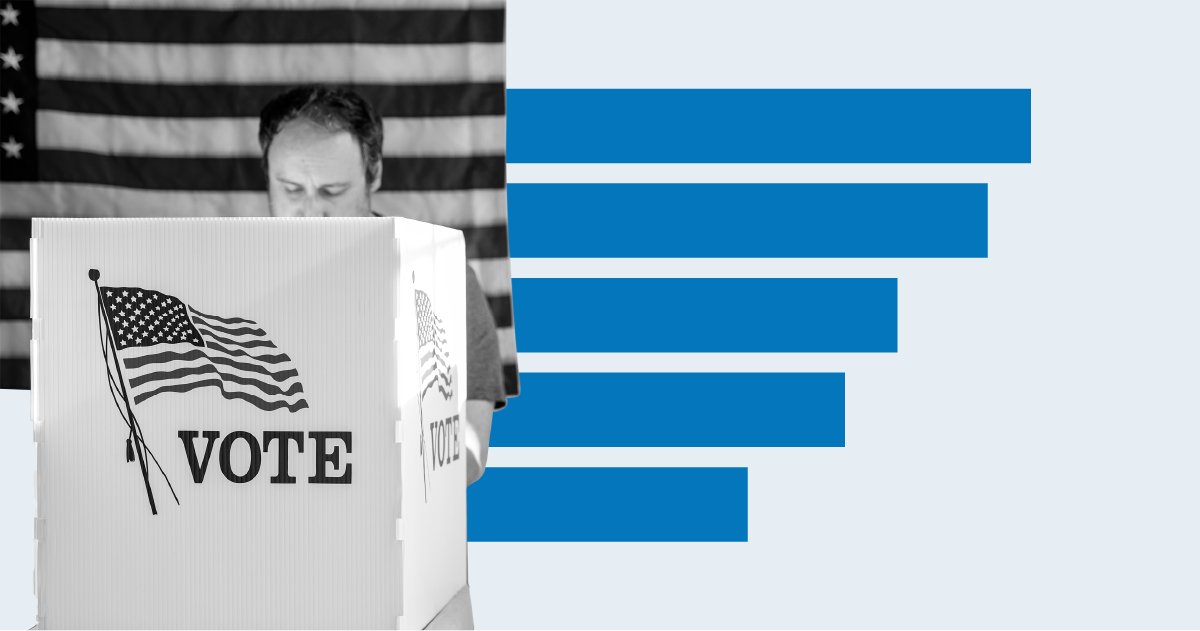Government
How do runoff elections work?

For many of us, “voting” conjures an image of people going to a ballot box on Election Day, but the way voters submit ballots varies from state to state. Some have in-person voting, others have mail-in ballots. Some states allow early voting, and others have day-of voting only.
Some election rules are set by the Constitution, including the date of the general election, restrictions on who has the right to vote, and the prohibition of poll taxes[1]. Congress can also pass laws to protect the right to vote like the Voting Rights Act of 1965, which prevents discriminatory practices like race-based voting restrictions or the Uniformed and Overseas Citizens Absentee Voting Act, which allows overseas military personnel and other American citizens living abroad to vote. These are two of six congressional voting laws.
But since because elections are typically administered by counties, election laws are also made at the state and local level, or be passed by ballot initiatives and referendums. To plan your vote, you’ll need to know your local requirements.
Most states provide at least two of three registration options: online registration, mail-in registration, and in-person registration. The requirements and timelines for each vary by state. One state, North Dakota, doesn’t require voter registration at all.
Nineteen states and Washington, DC, allow same-day in-person registration. Two of the nineteen — Hawaii and Vermont — allow same-day online registration as well. Vermont is also the only state that accepts mail-in registrations received by or on Election Day. The other 31 states require would-be voters to register anywhere from one to 30+ days in advance.
This process is called same-day voter registration, or conditional voter registration, and the details vary from state to state. Generally, voters register, and then separately, cast a ballot. The ballot is considered a provisional ballot and will be counted only if and when the voter’s eligibility is confirmed.
All states and Washington, DC, allow both in-person and mail-in registration (excluding North Dakota, which doesn’t require voter registration).
You are signed up for the facts!
Voter registration systems have changed over the last few decades, with most states — 41, plus Puerto Rico and Guam — now offering online registration.
Eight states and three territories do not offer online registrations, so voters in Arkansas, Mississippi, Montana, New Hampshire, Oklahoma, South Dakota, Texas, Wyoming, the US Virgin Islands, American Samoa, and the Northern Mariana Islands must submit voter registration forms either by mail or in person.
Every state offers some form of mail-in voting. Eight states — California, Colorado, Hawaii, Nevada, Oregon, Utah, Vermont, and Washington — mail ballots to every registered voter. Seven of these states also offer in-person voting options (Oregon doesn’t).
Although “voting by mail” and “absentee voting” are sometimes used interchangeably and both refer to mailed-in ballots, they’re not exactly the same:
Absentee voting refers specifically to voters who have requested to submit their ballots by mail or by drop-off in states where voting in-person is the norm. Fourteen states require an excuse to vote absentee — circumstances like being out of the county on Election Day, or having a conflicting work shift, illness, or disability that prevents someone from getting to a polling place. In some states, college students living in a different state or county from where they’re registered can also cast ballots by mail.
For voters who vote by mail, 29 states and Washington, DC, have drop boxes where people can return ballots in person.
Ballot drop boxes are “secure, locked structure where voters can deliver their ballots.” Rules regarding the location, availability, and security of ballot drop boxes vary significantly by jurisdiction. Some states and counties allow unstaffed drop boxes that are available to voters 24/7; others require boxes to be staffed by an election official, so they can only be accessed at set times.
Twenty-one states don’t offer ballot drop boxes at all. In all but one of these states, voters may drop off ballots in person to the county’s election office during specific time periods. Tennessee prohibits any in-person ballot returns, requiring all absentee ballots to be returned by mail.
Early voting is when a voter casts their ballot before Election Day. As with all other election-related regulations, processes and timelines for in-person early voting vary by state.
Currently, 38 states and Washington, DC, allow early in-person or in-person absentee voting.
In-person absentee voting is when a voter requests an absentee ballot, immediately receives it, and votes, all in one visit.
Alabama, Delaware, Mississippi, and New Hampshire are the only states that don’t allow any early in-person voting. All four do allow absentee voting if the voter requests an absentee ballot and provides an excuse that meets state requirements.
The eight states that automatically mail ballots accept them back before and up through Election Day. To accommodate people who opt to vote in-person, all these states except Oregon open at least one early in-person polling location per county.
Of the states that do allow early in-person voting, the voting period begins an average of 22 days before Election Day and closes an average of two days before Election Day. Pennsylvania opens its polls the earliest, with early voting starting 50 days before election day and closing on the Tuesday before, for 44 days of early voting.
Minnesota and South Dakota have the longest polling periods, each starting 46 days before the election and ending at 5PM the day before.
Kentucky has the shortest early voting window, three days. It begins the Thursday before the election and runs through Saturday before the election.
All states require some form of voter identification, either when registering to vote or voting for the first time.
After a voter has already registered or voted for the first time, the rules on when voters are required to show ID when voting in-person depend on the state. Fourteen states and Washington, DC, do not require voters to show ID at the polls if they have voted before. Twenty-one states require photo ID to vote in-person, and 15 accept alternative forms of ID. Examples of alternative forms of ID can include a government-issued document that shows your name and address, a current utility bill, or a bank statement.
States also vary on how “strict” they are about providing in-person ID to vote. In strict states, voters without acceptable identification vote on a provisional ballot and must provide a form of valid ID after Election Day for their vote to be counted. Voters may be required to return to an election office within a few days to present an acceptable form ID; if the voter doesn’t come back with ID, the provisional ballot is discounted.
“Not strict” states have alternative provisions for voting with a follow-up ID, such as signing an affidavit confirming one’s identity, requiring the signature on the ballot to match the signature of a voter registration card, or having a poll worker can vouch for one’s identity. The specific provisions vary by jurisdiction.
Learn more about swing states and get the facts every week by signing up for our newsletter.
Poll taxes, which were outlawed in the 24th amendment, are fees to vote.
Government
Government
Government
Government
Newsletter
Keep up with the latest data and most popular content.


